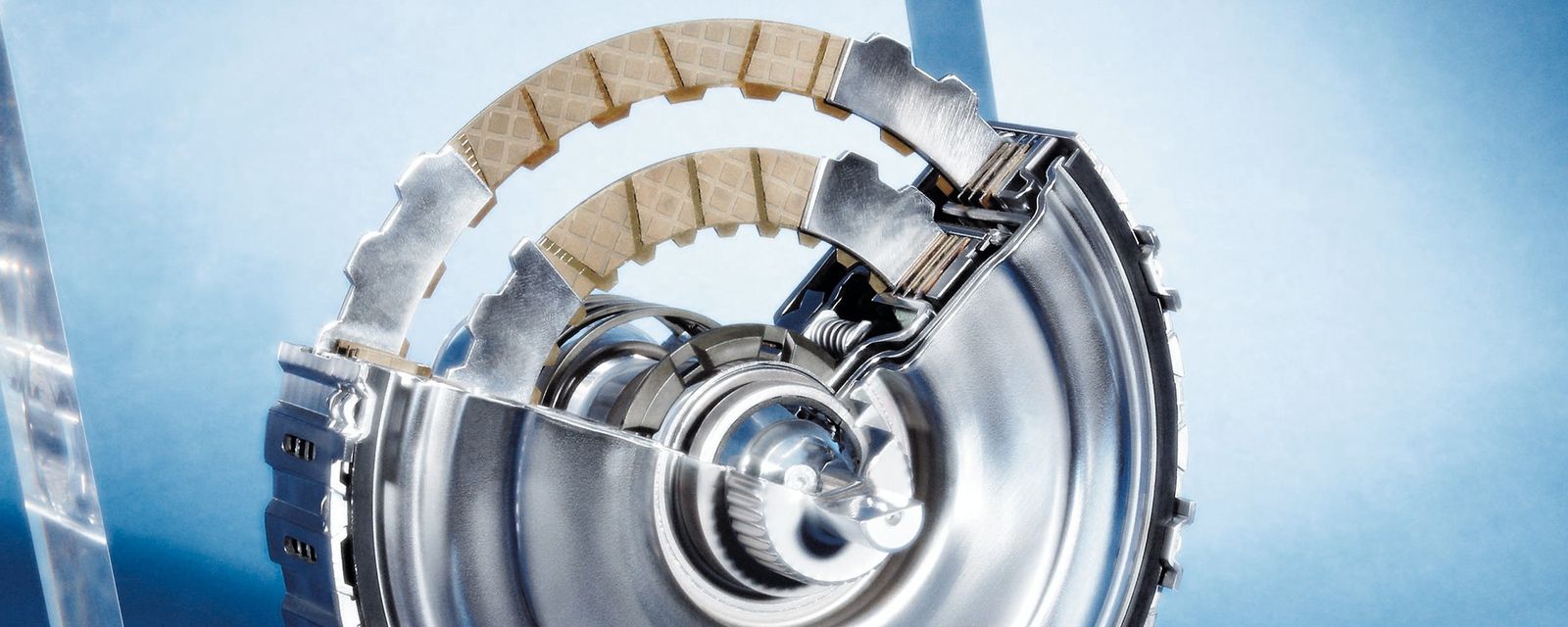Modern DSG automatic gearboxes use a pair of clutches in place of a single unit to help you change gear faster than a traditional manual or automatic alternative. Cars with DSG gearboxes don’t feature a clutch pedal and are controlled in exactly the same way as a conventional automatic.
If you’ve always wanted to know how electronic handbrakes work, whether lane assist can let you drive hands-free or if adaptive cruise control will take the stress out of driving, take a look at our jargon-free guides.
 What is a DSG gearbox?
What is a DSG gearbox?
DSG gearboxes feel almost exactly like a conventional automatic to drive and are controlled using a familiar lever or paddles behind the steering wheel to switch between Park, Neutral or Drive. Once on the move, they’ll happily change gear for you and pull away smoothly without the worry of stalling or having to use a clutch.
You can also select ‘S’ mode to make the car hold onto gears for longer to improve acceleration or fully manual ‘M’ mode if you’d prefer to choose exactly when to change gear yourself.
What are Audi S Tronic, Porsche PDK or BMW DCT?
S Tronic is simply Audi’s name for a DSG twin-clutch automatic gearbox. Considering the brand is part of the VW Group, these units are mechanically very similar to VW versions. Porsche’s own variety of twin-clutch auto is called PDK – or the infinitely more catchy Porsche Doppelkupplungsgetriebe. Likewise, BMW’s own version is called DCT for dual-clutch transmission. All these units function in exactly the same way as VW’s DSG units.
How does a DSG gearbox work?
Warning: mild geek content!
To help an engine transmit its power to the wheels as smoothly as possible – and avoid stalling – a coupler must be fitted between it and the gearbox. This is the case regardless of whether you change gears yourself or prefer it to be done automatically.
A traditional automatic gearbox uses a torque converter to connect the engine to the gearbox. This unit consists of two propellor-like fans facing one another in a sealed fluid-filled chamber. One fan is bolted directly to the engine and, when it spins, imparts a turning force (called torque) to the second propeller. This turning force is then transmitted to the wheels through a gearbox and drives the car forwards. As a result, cars fitted with this system tend to creep forwards when the engine is running unless the brakes are applied or the gearbox is in neutral.
A DSG automatic replaces the torque converter with a pair of computer-controlled clutches – one that operates on the odd-numbered gears and one for the even-numbers. It changes gears by simply disengaging one clutch and engaging the other – far faster than even an experienced driver could change gears manually.
 What are the advantages?
What are the advantages?
Automatic gearboxes are becoming increasingly popular but traditionally make a dent in performance and fuel economy. This is because some of the engine’s power is wasted by the fluid connection in the torque converter. Clutches are a more efficient way to transmit power and, as a result, modern DSG units often return better fuel economy. In some applications, a DSG can prove more fuel efficient than a conventional manual ‘box, too.
DSG units usually come fitted with more gears than a manual, too – as demonstrated by the current seven-speed and upcoming 10-speed versions. The higher gears in these DSGs help boost fuel economy when cruising because the engine is revving less at motorway speeds. It also means the car can accelerate harder because closer gearing allows the engine’s power to be used more effectively.
Some drivers criticise traditional torque-converter autos for not being as exciting or involving to drive as manuals because you don’t have total control over the gear selection. DSGs go some way to rectifying this because gear changes are more immediate and can be controlled more precisely using either a lever or Formula One-inspired paddles on the steering wheel.
 Are there any drawbacks to DSGs?
Are there any drawbacks to DSGs?
For the most part, DSGs represent a significant improvement over traditional autos in terms of both performance and efficiency. The biggest issue for most will probably be the increased price of cars fitted with these ‘boxes.
They aren’t perfect, however. The fluid connection used by torque converters allow them to creep forward naturally from a standstill. This isn’t the case in a DSG because the onboard computer has to realise you’ve stepped off the brake before it progressively engages a clutch to mimic the ‘creep’ function. As well-programmed as these systems are, they can’t match a torque converter for smoothness in heavy traffic.
It’s also worth noting that reversing in a DSG car requires a very light touch on the accelerator. Our favoured tactic for not shooting backwards violently is to just pop the car in reverse and take your foot off the brake – it’ll eventually creep backwards at a sedate pace. Touch the accelerator and you’ll often career backwards a bit faster than you might expect.
What cars come with a DSG?
You might already be familiar with the DSG acronym if you’ve looked at the current VW, SEAT, Skoda ranges but a whole host of manufacturers offer similar units under different names. Audi calls its DSG gearboxes S tronic units while Porsche refers to them as PDK gearboxes. In recent years they’ve become so common that most small or high-performance cars offered with automatic gearboxes will feature a DSG-style system in place of an older torque converter unit.
Source: carwow